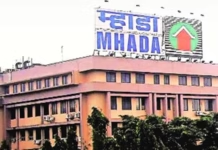150 Years of Indian Railways The Journey from Steam to Vande Bharat and Beyond
For 150 years, Indian Railways has been the lifeblood of the nation’s transportation system, transporting over 10 billion passengers and 1.6 billion tonnes of freight every year. From the first steam-powered trains of the 19th century to the modern, high-speed Vande Bharat and Namo Bharat trains, India’s railway system has undergone a remarkable transformation.
With over 8,000 trainsets, 15,000 locomotives, and 300,000 freight wagons, the Indian Railways continues to be an essential part of the nation’s economy and social fabric. When India’s first steam train chugged from Mumbai to Thane in 1853, it marked the beginning of a transportation revolution. Fast forward to the present, and the Indian Railways has grown into one of the world’s largest and busiest railway networks. Today, the country boasts state-of-the-art trains, including the Vande Bharat Express, a semi-high-speed train that represents the future of rail travel in India. These modern trains not only offer speed but also provide enhanced comfort and efficiency for passengers.
Despite these advancements, India’s rail network still faces the challenge of maintaining a vast and aging infrastructure. With heavy loads running every day, wear and tear are inevitable. As a result, ensuring the continuous availability and reliability of trains has become a priority for Indian Railways. Traditionally, the maintenance of railway systems was mechanical, reactive, and largely depended on fixing issues when they occurred. However, as technology has evolved, so too has the approach to railway maintenance. Indian Railways has increasingly adopted predictive maintenance practices, shifting from a procurement-based model to a proactive lifecycle-based approach. This change allows for more efficient and reliable operation, reducing downtime and extending the life of rolling stock.
The introduction of Internet of Things (IoT)-enabled digital solutions and advanced data processing has revolutionised operations. Real-time monitoring of assets, including trains, tracks, and stations, has made it possible to detect issues before they escalate into major problems. By collecting and analysing data, Indian Railways can optimise performance, reduce energy consumption, and improve customer satisfaction. For example, intelligent rostering and energy usage monitoring are helping to cut down energy costs and enhance operational efficiency. These measures have already resulted in up to 20% material cost savings, a 30% reduction in train downtime, and a 50% decrease in recurring faults.
Looking ahead, Indian Railways is set to continue its evolution, with over INR 474,700 crore (USD 56.89 billion) worth of rolling stock on order over the next five years. This influx of investment is expected to further modernise the network and improve its sustainability. The future will also see a greater reliance on strategic partnerships, particularly for rolling stock maintenance. Outsourcing maintenance operations to specialised contractors is seen as an effective way to optimise performance, reduce costs, and ensure the longevity of assets. Moreover, the Indian government’s “Make in India” initiative will be key in fostering local manufacturing and job creation within the railway sector. By encouraging domestic contractors and vendors to participate in rail infrastructure development, the government aims to boost economic growth and enhance the railway system’s capabilities.
While technology is transforming the operations of Indian Railways, it is also creating new opportunities for upskilling within the railway workforce. The shift towards IoT-enabled solutions and predictive maintenance will require new skill sets, creating avenues for employees to learn and grow in the evolving railway ecosystem. This will not only enhance service quality but also provide long-term job stability for those working within the industry. As Indian Railways celebrates 150 years of service, it stands at the forefront of modernisation, with cutting-edge technology and innovative approaches driving its future. With continued investment in infrastructure, technology, and human resources, Indian Railways is poised to continue playing a vital role in the nation’s economy and society for years to come. The journey from steam trains to the ultra-modern Vande Bharat Express is just the beginning of a new era for Indian Railways, one that promises even greater efficiency, sustainability, and comfort for passengers.







